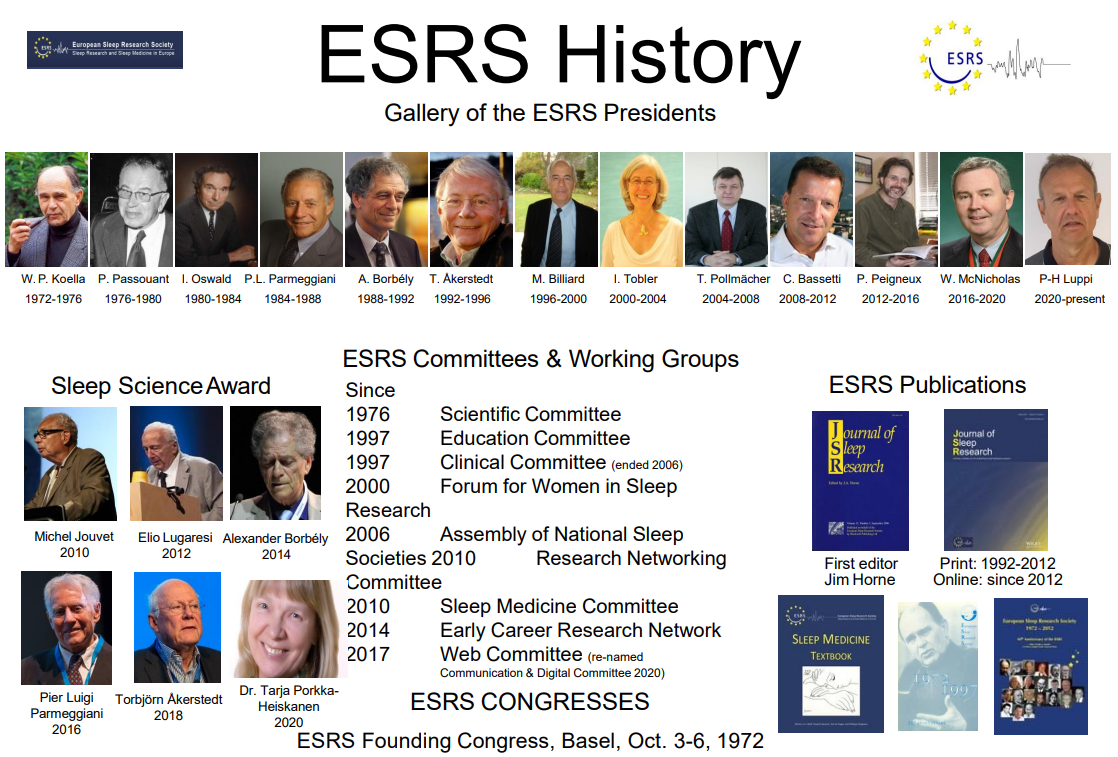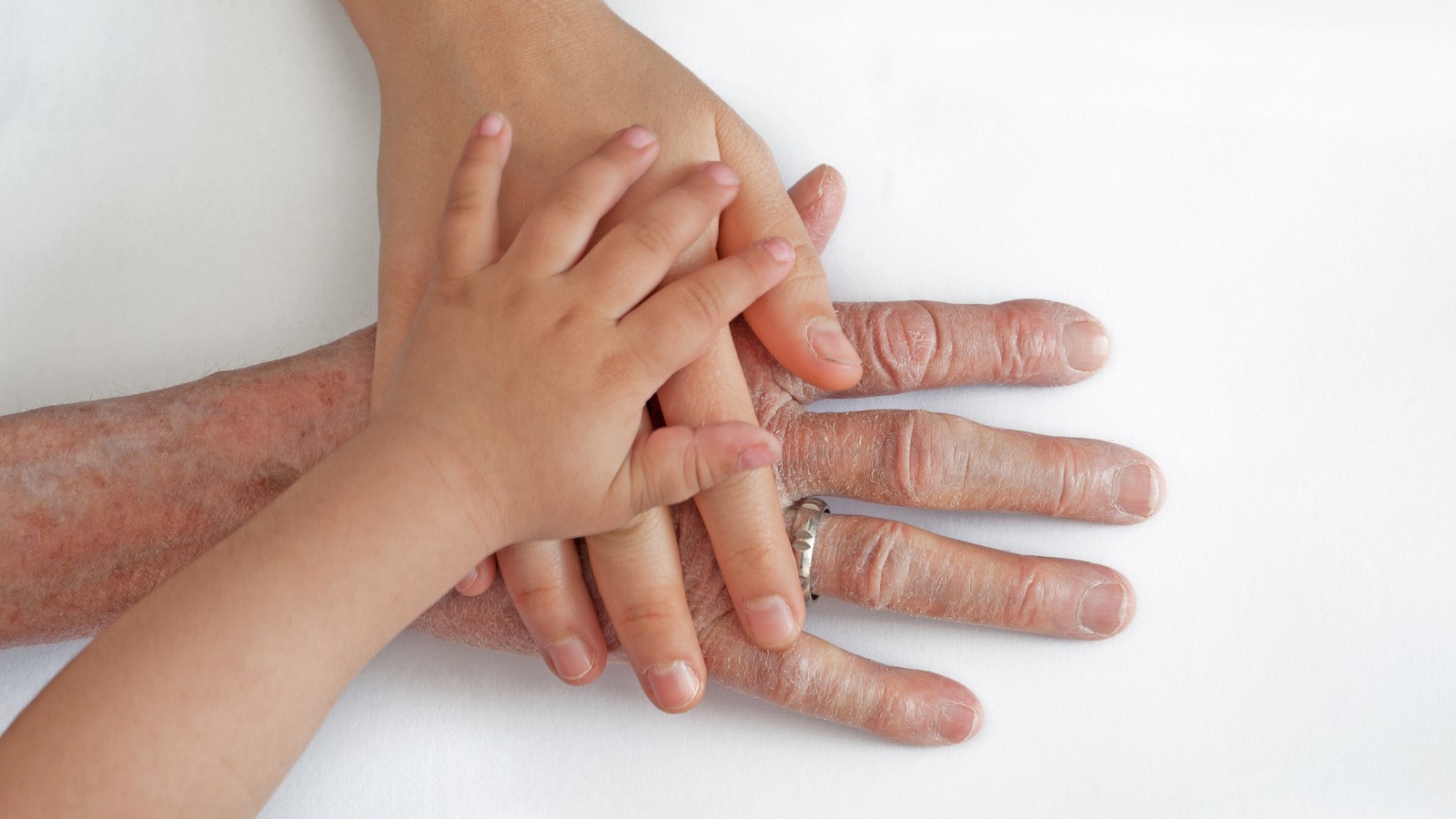Physiological Basis of Sleep: Ageing and Sleep
The 2nd edition of the ESRS Sleep Medicine Textbook is an invaluable resource for the latest information on physiological basis of sleep. The summary that follows offer insights into the Sleep Medicine Textbook chapter “Ageing and sleep: Sleep in all stages of human development“.
Ageing and Sleep: Sleep in All Stages of Human Development
From womb to grave, sleep undergoes drastic changes: sleep duration and architecture change mainly during infancy and early childhood, whereas the regulation of sleep undergoes considerable changes during adolescence and adulthood. In this review, we provide an overview of important sleep features at all developmental stages. Most of the knowledge is based on electrophysiological measurements starting at birth when the electroencephalogram (EEG) displays a discontinuous pattern. Thereafter, neonatal sleep transitions to infantile sleep and the two most fundamental sleep stages of adulthood, non-rapid eye movement (NREM) and rapid eye movement (REM) sleep, originate. Both sleep stages undergo further changes during childhood, adolescence, and adulthood. The regulation of sleep depends on two main processes, a homeostatic process reflecting sleep pressure, which can be assessed by slow-wave activity during NREM (EEG spectral power between 1 and 4.5 Hz), and a circadian process, responsible for the correct timing of sleep within 24 hr. Both systems evolve during the first years of life and show maturational changes, most prominently during childhood and adolescence. During childhood and adolescence, the circadian process steadily delays and the homeostatic process undergoes marked changes in its dynamics and characteristics. During early adulthood, both processes remain stable. Typical modifications of sleep in the elderly are decreased sleep quality and quantity. Moreover, EEG spectral power during NREM sleep gradually decreases after the age of 30, which is associated with changes in brain structure and related to a decline in memory performance and cognition with increasing age.
Keywords:
circadian regulation, development of sleep, homeostatic regulation, sleep architecture, sleep duration, sleep macrostructure, sleep microstructure
Learning Objectives:
- Understanding the developmental changes of sleep duration, sleep architecture, and sleep regulation throughout life.
- Comprehending the developmental changes of circadian rhythms throughout life.
- Recognizing the difference between sleep characteristics in infants, children, and adults.
- Apprehending the development of important EEG features during sleep, such as sleep spindles and slow waves throughout life.
Key Points:
- Total sleep time massively decreases across the first year of life. During the same time, the initial precursor sleep stages develop into adult-like sleep stages.
- The circadian and homeostatic processes of sleep regulation are established during infancy.
- … you can read all key points and the full A.8 Ageing and Sleep chapter in the ESRS Sleep Medicine Textbook – order it here.
Summary by:
Sven Leach, Nadja Olini and Reto Huber (2021). A. Physiological Basis of Sleep 8. Ageing and sleep: Sleep in all stages of human development. In Bassetti, C., McNicholas, W., Paunio, T., & Peigneux, P. (Eds.). Sleep Medicine Textbook (2nd ed., pp. 95-108). Regensburg: European Sleep Research Society.
Related chapters released on physiological basis of sleep include: The Neurophysiology and Neurobiology of Wakefulness and NREM and REM Sleep, and Sleep and Dreaming.
Recent publications from ESRS members
- Mammarella et al. (2023). Using pharmacotherapy to address sleep disturbances in autism spectrum disorders. Expert Rev Neurother.
- Hitrec et al. (2023). Sleep deprivation soon after recovery from synthetic torpor enhances tau protein dephosphorylation in the rat brain. J Comp Physiol B.
- Barateau and Dauvilliers (2023). Cardiovascular burden of narcolepsy: what have we learned and what do we still need to know? Sleep.
- Palagini et al. (2023). Insomnia During the Perinatal Period and its Association with Maternal and Infant Psychopathology: A Systematic Review and Meta-Analysis. Curr Psychiatry Rep.
- Giacomini et al. (2023). Electroclinical Features of Epilepsy in Kleefstra’s Syndrome. Neuropediatrics.
- Vignati et al. (2023). Exercise in hypoxia: a model from laboratory to on-field studies. Eur J Prev Cardiol.
- Cavaillès et al. (2023). The role of cardiovascular health and vascular events in the relationship between excessive daytime sleepiness and dementia risk. J Sleep Res.




